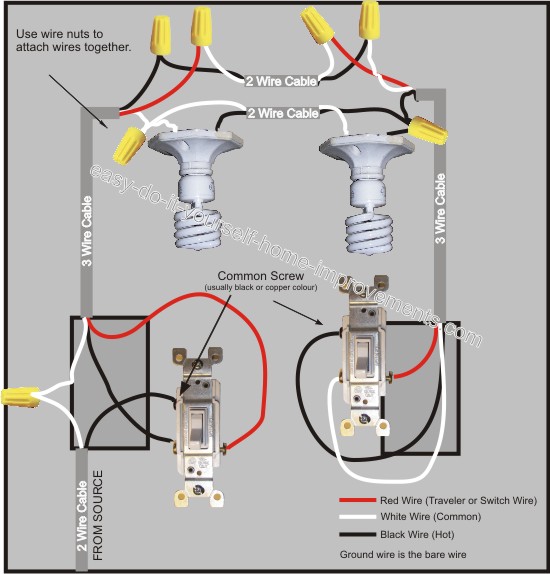|
PuTTY riot posted:I'm replacing a bunch of beige outlets with white TR outlets in my kid's new room, then doing the same in the nursery she's moving out of. The rest of the house is 12 gauge 20amp. This is the only place I think I've found anything using the backstabs except for a utility room that may have been an addition (had to add gfi outlets in a bunch of places when we moved in). The outlets I have only allow 14 gauge backstabs. Is the amount you strip for screw terminals the same as you'd use for backstabs? I'd rather go that route but if 12 gauge backstabs are still a thing that would be easier/faster. ... I wish I had seen these before today. I just replaced one of my outlets and it has the type where the screw wraps around the wire; that style would have made my life so much easier. It probably took me an hour and a half to change out one outlet because of the old 12awg that didn't have much slack. Not made easier by the metal box either. And speaking of... I put my outlet tester on the replacement outlet. I get the indicators that it's either "open ground" or "correct". The only thing I'm not sure of is which. The middle light is on for both, but the right light is for "correct" -- it's dim but noticeably on compared to the left side that is completely off. I've also tried a surge protector strip that has indicators for "protected" (from surges) and "ground" -- once again this one has the ground very dimly lit. Does this mean I have a ground, albeit minimal? This was replacing an old 2 prong outlet with a new that has a ground plug. I've replaced others in my house, almost all of them gained ground once I added a small wire to the metal enclosure to the outlet.
|
|
|
|

|
| # ? May 10, 2024 03:44 |
|
uapyro posted:... I wish I had seen these before today. I just replaced one of my outlets and it has the type where the screw wraps around the wire; that style would have made my life so much easier. It probably took me an hour and a half to change out one outlet because of the old 12awg that didn't have much slack. Not made easier by the metal box either. Do you have a multimeter?
|
|
|
|
PuTTY riot posted:edit: Hey all you pros, do you guys have a nickname for said "doodads", whether internal or external? Because they're better than backstabs, and have all the functionality of screw terminals but with a little extra.
|
|
|
|
Hubis posted:Do you have a multimeter? Yes. What should I be looking for? TIA!
|
|
|
|
uapyro posted:Yes. What should I be looking for? TIA! Measure AC voltage between hot and neutral, then hot to ground. What do they say?
|
|
|
|
I want to put outlets on the same circuit as a set of lights controlled by two 3-way switches. I cant seem to find a good diagram that covers how to do this setup; and I am fairly sure it's very straightforward but I cant find a diagram to confirm. Power source -> a number of outlets -> lights&switches. Can anyone assist in a diagram for this? I'm doing this all as rough-in in exposed framing, and will be having an electrician look it over + do the final hookup; but I'd like to do the vast majority of labor and wiring myself (While all the wires aren't live / connected in any way). Any suggestions? Diagrams? Books I could pick up?
|
|
|
|
Walked posted:I want to put outlets on the same circuit as a set of lights controlled by two 3-way switches. Run two circuits instead, so if you're doing work on the one with the outlets, you don't have to do it in the dark?
|
|
|
|
Walked posted:I want to put outlets on the same circuit as a set of lights controlled by two 3-way switches. This is what you want:  I think you can run the 3 conductor from each switch to the first device in the chain and then 2 conductor to every device there after. Ask a sparky to be sure.
|
|
|
|
Hopefully this is the right place, as it falls under not wanting to burn my house down by changing the lighting Ive got a finished basement with office/computer area at one end, small bar at the other, and its open for kids play area in the middle. Not divided at all and let's say 30'x10' which might be off by a couple feet but close enough. The lighting is terrible and I really haven't put anything into it, since it "works". Other than the bar which has its own overhead light and switches(these are OK and can stay for now), there are 3 sets of florescent tubes or shop lights cut into the ceiling, pretty evenly spread so that the middle is the middle and the others are about 6' from the wall. There is a 3-switch at the bottom landing. 1 is for the stairway lighting, this is OK and can stay as it is. 2 controls the center light fixture. Currently this is a pair of blacklight tubes, the kids like em, eh whatever 3 controls the two outer fixtures. This one is my biggest problem. At one end, the fixture is cracked at the end where you insert the tube and twist it, so if tubes are in it, they blow before too long. At the other end, a recent development is that the tubes come on at about 10% brightness, so pretty much uselss. (I do have desk lighting so I'm not totally living in a dark cave, but close I've looked a little bit and the tube fixtures appear to be what you would find in an office or shop, they have the metal housing up above the ceiling, there's a ballast tucked in there, etc. This is where my knowledge of this type of lighting ends. Are these fixtures fairly easy to replace? Theyre over 10 yrs old and are the older, larger type of tubes (T40 IIRC but I might have that backward), so even I keep the same style I wouldn't mind switching them up to something a bit more efficient and reliable. I've done simple electrical such as replacing outlets, so if the job conssits of cutting the power, removing the old fixture, connecting the same wires to the new fixture, and mounting, then I wouldn't be worried about that My other thought was about removing those fixtures, covering the holes, and then going with some can lights in a couple locations. This goes a little past my comfort zone since with the tubes, theres likely 1 set of wires going to it, and with cans I would need to splice or chain these wires to 2 or 3 spots. The cutting and mounting I think I would be fine with. I kinda like this idea because then I could vary the bulbs at each location to fit the needs, i.e. brighter for where the kids play, dim near the bar, etc. Some sort of track or flush mounted lights would be an alternative to cans, but along the same thinking. I think
|
|
|
|
Walked posted:I want to put outlets on the same circuit as a set of lights controlled by two 3-way switches. I'm confused. Do you want the outlets to be on the 3 way switches, or on all the time? If you want the outlets to be always powered, then make a branch for them at or before the first switch of the 3 way setup. There are a handful of methods for wiring 3 way switches, only a couple of which are still legal since the code update requiring a neutral wire at all light switch boxes. Speaking of which: SiGmA_X posted:This is what you want: That method isn't legal anymore with the repurposed neutral wire going to the switch on the right. If you swapped out that /3 cable for a pair of /2s, it would be fine though. Here are the wiring methods, of which only options 1 and 2 are correct as written. Fart.Bleed.Repeat. posted:Hopefully this is the right place, as it falls under not wanting to burn my house down by changing the lighting Do you have a drop ceiling, where the light fixture sits in the drop ceiling rails? Honestly, I would leave that fixture. Fluorescents are very energy efficient. Fluorescent tubes are measured by the bulb width in "T"s, where a T is 1/8 an inch. Common sizes are T12 and T8, and no, they aren't interchangeable. If you're quoting a 40, then you're probably confusing it with a 4 foot T12, since their largest wattage is 40W. First off, how many bulbs does that fixture take? T12s are wired in pairs, so if one goes out, the other one does too. Try 2 new bulbs of matching wattage and see if it comes on. If it doesn't, you would need to swap out the ballast, but since you said the ends are falling apart, it might be faster and cheaper to swap out the entire fixture. kid sinister fucked around with this message at 22:07 on May 24, 2016 |
|
|
|
Do you have a drop ceiling, where the light fixture sits in the drop ceiling rails? Honestly, I would leave that fixture. Fluorescents are very energy efficient. Fluorescent tubes are measured by the bulb width in "T"s, where a T is 1/8 an inch. Common sizes are T12 and T8, and no, they aren't interchangeable. If you're quoting a 40, then you're probably confusing it with a 4 foot T12, since their largest wattage is 40W. First off, how many bulbs does that fixture take? T12s are wired in pairs, so if one goes out, the other one does too. Try 2 new bulbs of matching wattage and see if it comes on. If it doesn't, you would need to swap out the ballast, but since you said the ends are falling apart, it might be faster and cheaper to swap out the entire fixture. [/quote] The ceiling is drywall and finished, with just the rectangle cut out that is close to the standard size of 2x1 drop ceiling tiles, and then some wood trim so that a regular size plastic can be slid in place. Each fixture is 2 bulbs, and yes it sounds like they might be T12, I think I got the 40 from like F40T12. I'm not near the bulbs now to read off of them and it's been a couple years since I raided our office for matching tubes  I'll poke around in the ceiling some more tonight and see how the old ballast are connected
|
|
|
|
Fart.Bleed.Repeat. posted:The ceiling is drywall and finished, with just the rectangle cut out that is close to the standard size of 2x1 drop ceiling tiles, and then some wood trim so that a regular size plastic can be slid in place. Each fixture is 2 bulbs, and yes it sounds like they might be T12, I think I got the 40 from like F40T12. I'm not near the bulbs now to read off of them and it's been a couple years since I raided our office for matching tubes Don't even bother. Get new ballasts and tombstones (the things the lamps plug into) for whatever length T8 or T5HO will fit. If the fixture is 4' long, then you need 4' lamps. If the fixture is 2' long, then you need 2' lamps. There are T40 lamps that are U-shaped T8s, and I hope you don't have those. It may even be cheaper overall to just get a whole new fixture. I'm not sure what you mean by "1x2 drop ceiling tile." In tile lingo, that's a 1' x 2' tile, which is not a standard size. The standard size is going to be 2'x4'. If you've got 2x4 lay-in troffers, then an all-up T5HO fixture with lamps and lenses is probably about $50. Install is as simple as replacing an outlet, too. I bolded the google search terms for you. babyeatingpsychopath fucked around with this message at 23:55 on May 24, 2016 |
|
|
|
kid sinister posted:I'm confused. Do you want the outlets to be on the 3 way switches, or on all the time? Thanks! The only question I have at that point is branching; I'm fairly sure this is straightforward as heck, but googling it is coming up blank (probably because its stupidly simple). I can just do that at a junction box, right? And then have a lights branch and an outlet branch? If I wasnt at my phone I'd put together a diagram
|
|
|
|
Walked posted:Thanks! The only question I have at that point is branching; I'm fairly sure this is straightforward as heck, but googling it is coming up blank (probably because its stupidly simple). You could also do it at one of your outlets. Imagine a string of three outlets. Now replace that third outlet with the switches and lights. The two outlets upstream don't know or care what's downstream. Now, if you replace the middle outlet, then the upstream one may be confused. Depending on how much you care about the cost of wire, you could just use 12/4 for the entire thing and be able to have a hot, a neutral, and both travellers in the same cable and put your devices anywhere you wanted. If I were doing this, I'd be doing the whole run in 12/3, because 100' of 12/3 is probably cheaper than 25' of 12/2 and 50' of 12/3.
|
|
|
|
babyeatingpsychopath posted:You could also do it at one of your outlets. Imagine a string of three outlets. Now replace that third outlet with the switches and lights. The two outlets upstream don't know or care what's downstream. Now, if you replace the middle outlet, then the upstream one may be confused. Thanks - this totally matches my understanding. Awesome. I still have a book coming today, my father-in-law giving it an eyeball this weekend, and an actual electrician doing the final hookup so I'm employing safety mechanisms but still trying to learn 
|
|
|
|
Walked posted:Thanks! The only question I have at that point is branching; I'm fairly sure this is straightforward as heck, but googling it is coming up blank (probably because its stupidly simple). Think of the electrical branching analogy just like a tree branch. The trunk is your breaker panel, the branches off the trunk are your circuits and the leaves are your actual devices: switches, outlets, lights, etc. There's one uncommon yet actual tree term, called a "node", where the branch either leafs out, another branch splits off, or both. Think of an electrical box as a node and the branch sections as the cable going from box to box. If you don't want your 3 ways controlling the outlets, then they will need to be on their own branch. Like any branch, it needs to attach at a node, so attach it at any of your outlet boxes. You could run it off the last outlet box and make the branch look like one long, single branch if you want. It comes down to cost and time. There's other rules too like box fill, but unless you use the shallowest boxes, you won't have problems cramming too many wires into too small a box.
|
|
|
|
Good to know re three ways, thanks. The new approved way seems easier anyway. I hate how my dads are done...
|
|
|
|
SiGmA_X posted:Good to know re three ways, thanks. The new approved way seems easier anyway. I hate how my dads are done... Eh, all the other 3 way methods are still legal per se, it's just that the problem is now you have to run more wires. With every switch box now needing a dedicated neutral, /3 doesn't have enough wires for all but the most straightforward 3-way method, and /3 the most that 99% of stores and suppliers carry. They need to make /4 cable more available. The way around needing more wires than a single /3 run has is to run a pair of /2 cables, which takes longer to do, you have to figure out which black and whites match up to the blacks and whites at the other end, and you still have a superfluous ground wire. You can see that in some of the 3-way diagrams on that site. kid sinister fucked around with this message at 02:08 on May 26, 2016 |
|
|
|
kid sinister posted:The way around needing more wires than a single /3 run has is to run a pair of /2 cables, which takes longer to do, you have to figure out which black and whites match up to the blacks and whites at the other end, and you still have a superfluous ground wire. You can see that in some of the 3-way diagrams on that site. There are now NM-B cables that have two full circuits in them, so 12/4, but it's marked as 12-2/2. I think the actual colors are black, white, red, and red/white. Of course a bare ground, too, so total of five conductors in the cable. This is Good News for kitchens that need two circuits on GFCI breakers, or two-circuit bedrooms on AFCI breakers.
|
|
|
|
  quote:" House had no proper ground, Electricity grounds out through Gas line"
|
|
|
|

|
|
|
|
I've heard stories of BX glowing like that, but a gas line? Yikes.
|
|
|
|
Protip: don't go up in the attic on the hottest day yet this year, first thing in the morning, without breakfast or coffee, and attempt to fix the wiring to a kitchen light, while sweating out roughly 50% of your body weight. You'll likely wire your ground up to the hot, and then sit there for half an hour, staring at the pile of copper spaghetti in the fully-stuffed junction box, wondering how/why the gently caress your ground is hot, and how you're going to get this solved before your house shows to some potential buyers in a few hours. Or so I've heard.
|
|
|
|
|
Duh! Everyone knows you should have done it in the afternoon. 
|
|
|
|
First thing in the morning for me is, like, 11AM, so it was close enough. I mean it would be, in this hypothetical situation, if it were to happen to me, which it definitely did not.
|
|
|
|
|
Bad Munki posted:staring at the pile of copper spaghetti in the fully-stuffed junction box, wondering how/why the gently caress your ground is hot This reminds me of when I was rewiring a garage yesterday, as some previous guy decided it would be a good idea to have five bundles of 14-2 NM plus a receptacle in a tiny handy box. With multiple wires on each receptacle screw and no pigtails. With a large chunk of wiring running horizontally practically screaming HIT ME WITH A CAR DOOR. So after I untangled the pasta, added new boxes, wire nutted everything together, I went to turn on the breaker and "hmm... that felt oddly easy to flip, I usually get more resistance to turning on the breaker.... it made a weird noise and literally nothing works in the garage". Unbundled my new, much cleaner pasta, tested for voltage, and "uhhhh.... why the gently caress is this neutral wire hot?" I had failed to notice and/or forgot that there were two NM bundles leading to the garage through the underground conduit, one of which was the regular power and the other was coming from a 3-way switch for garage lights controlled inside the house and inside the garage. One bundle of 14-2 and another bundle of 14-2, no 14-3. Black taped at the entry to the garage, but I believe I clipped off the black tape on the entry to the box cleaning up the previous spaghetti mess. That circuit breaker was very confused. After wrapping everything up, I was running a ground test on the inside-garage light controls, a three way switch next to a regular single-pole switch, just to make sure the ground nut was holding good. Tested the three-way switch, ground tested perfect. Tested the singlHOLY gently caress SMOKE CAME OUT WHAT THE gently caress. Turns out that single-pole switches do not have any screws on the left-hand side and you would be dumb to fumble around on the left-hand side of a single pole switch because there's nothing there. Tested fine though!
|
|
|
|
I have an electric car, its 3.3kw fast-charge cable is NEMA 5-20P. I built a bunch of adapters so that I could plug it into various 240v dryer outlets, and the outlet for the compacting dumpster at my previous job. I made them all with superthick 50 amp wiring, from one Leviton plug straight into another, and they all work great on those sockets. My new job has a compacting dumpster outlet they said I can use, but I noticed the 4-prong twist-lock is NEMA L16-20. I looked it up and it is 3-phase, which I have no familiarity with. Can I create a 5-20R to L16-20P adapter by just wiring some and not all of the phases? Obviously if it can be done I'll research the gently caress out of it so I don't fry myself and the adapter is safe, but I just wanted to know first if it's actually possible.
|
|
|
|
Zero VGS posted:I have an electric car, its 3.3kw fast-charge cable is NEMA 5-20P. The 5-20 wants a neutral and the L16-20 doesn't have one, also the L16 might be running as high as 480 volts. Depending on how that receptacle is actually hooked up you could maybe make it "work" but not safely or legally. Mimesweeper fucked around with this message at 06:08 on May 29, 2016 |
|
|
|
magic mountain posted:The 5-20 wants a neutral and the L16-20 doesn't have one, also the L16 might be running as high as 480 volts. Depending on how it's actually hooked up you could maybe make it "work" but not safely or legally. OK, thank you, no way I'm trying that then if there's a chance it's 480v, nevermind that the wires don't match up.
|
|
|
|
Zero VGS posted:OK, thank you, no way I'm trying that then if there's a chance it's 480v, nevermind that the wires don't match up. It most likely is, it's intended for 480 but you just never know what someone might have built until you check it out for sure. Even if it's hooked up to a lower voltage you're stuck without a neutral. Hopefully you can finding something a little more compatible.
|
|
|
|
babyeatingpsychopath posted:Don't even bother. Get new ballasts and tombstones (the things the lamps plug into) for whatever length T8 or T5HO will fit. If the fixture is 4' long, then you need 4' lamps. If the fixture is 2' long, then you need 2' lamps. There are T40 lamps that are U-shaped T8s, and I hope you don't have those. The holes are 16x48 so a bit nonstandard  I forgot that I had to cut down a couple of the plastic covers/lens to make it fit. I settled for some ready to go LED fixtures and it was real straightforward. Cut 3 wires and move em to the new fixture, twist, tape, and fire it up. 20W LED in each, I put one in each of the outer fixtures. I think its as bright as the 2 x 40w tubes of the old one easily I forgot that I had to cut down a couple of the plastic covers/lens to make it fit. I settled for some ready to go LED fixtures and it was real straightforward. Cut 3 wires and move em to the new fixture, twist, tape, and fire it up. 20W LED in each, I put one in each of the outer fixtures. I think its as bright as the 2 x 40w tubes of the old one easily
|
|
|
|
The wires in my A/C heat exchanger are in bad shape and I'd like to replace them. They are flexible stranded 12 AWG with a thick rubber insulation (similar to a spark plug wire) that I assume is for abrasion resistance due to the vibration from the fan and compressor. My local hardware store doesn't have anything like that, so I need to order it online, but I don't know what it is called. Can somebody give me a link to what I need? Also, I ordered a cheap connector (butt, spade, ring, quick, etc.) assortment and wire nut assortment from Amazon and they are pretty crappy. Any suggestions of brand names for good quality connectors and wire nuts?
|
|
|
|
SkunkDuster posted:The wires in my A/C heat exchanger are in bad shape and I'd like to replace them. They are flexible stranded 12 AWG with a thick rubber insulation (similar to a spark plug wire) that I assume is for abrasion resistance due to the vibration from the fan and compressor. My local hardware store doesn't have anything like that, so I need to order it online, but I don't know what it is called. Can somebody give me a link to what I need? Not 100% sure on the wire, but maybe something like this? Automotive wiring should be more than durable enough for the situation. As for the rest, you want Ideal. Mimesweeper fucked around with this message at 02:22 on Jun 7, 2016 |
|
|
|
SkunkDuster posted:The wires in my A/C heat exchanger are in bad shape and I'd like to replace them. They are flexible stranded 12 AWG with a thick rubber insulation (similar to a spark plug wire) that I assume is for abrasion resistance due to the vibration from the fan and compressor. My local hardware store doesn't have anything like that, so I need to order it online, but I don't know what it is called. Can somebody give me a link to what I need? Buy some SOOW cable and strip off the outer insulation. The insulation on the individual wires is pretty robust. They sell it by the foot at most big box stores like Lowes and Home Depot. As for the connectors like that, they're pretty much all cheap crappy crap. You could try asking over in the electronics megathread here in DIY, especially if your connectors are weird shapes or sizes. I wouldn't recommend wire nuts for anything that vibrates.
|
|
|
|
Any suggested best practices for outlet and switch placement on a covered porch? The porch is like 15' by 12' and shares 2 brick walls with the house. I found these links which mostly cover the NEC requirements. http://electrical.about.com/od/receptaclesandoutlets/tp/Outdoor-Lighting-And-Receptacle-Codes.htm http://www.front-porch-ideas-and-more.com/electrical-codes.html I'm thinking a switch to control a ceiling fan, 2 outlets like 18" above the ground (1 on each wall), and then 1 outlet 8" for speakers or string lights.
|
|
|
|
Hashtag Banterzone posted:Any suggested best practices for outlet and switch placement on a covered porch? The porch is like 15' by 12' and shares 2 brick walls with the house. Outdoors, the only requirement for outlets is for one each near the front and rear doors, and any other decks. Only one in each location is required, so any extra outlets are up to you. Under a covered porch, you could get away with flip covers and not the in use covers. About the only thing that first link missed is that outdoor outlets also need to be weather resistant in addition to having GFCI protection. Will these be surface mount boxes or will you be running the cabling through the house? I'm guessing that those outdoor switches will be controlling an out door light? In that case, you will need to get an outdoor fixture rated at least UL damp. That's actually a good thing for outdoor ceiling fans. Indoor ones have blades made of essentially cardboard. Outdoors, they start sagging from the humidity after awhile.
|
|
|
|
So I have a garage that's more like a shed because it's lacking doors on the bays. I went to install a new breaker today for an air compressor and got a little surprise when I opened the panel. 
|
|
|
|
rdb posted:So I have a garage that's more like a shed because it's lacking doors on the bays. I went to install a new breaker today for an air compressor and got a little surprise when I opened the panel. Wow! Furnished pets! Seriously though, mud daubers are little assholes. Expect every single grounding prong hole to be plugged up by them.
|
|
|
|
kid sinister posted:Wow! Furnished pets! Oh Jesus I thought that was just a bad application of Great Stuff foam. Not the bees!
|
|
|
|

|
| # ? May 10, 2024 03:44 |
|
I need to buy a multimeter. There are a couple chinese ones on Ebay, selling for 2-3 bucks. Is that safe to buy? I don't want crap exploding in my hands or catching fire.
|
|
|






























